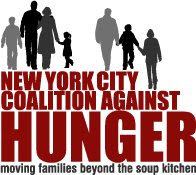From November 2007 to 2008, the City’s welfare caseload dropped by 16,000 even as the number of people forced to use emergency food programs spiked and the number of homeless families reached a 25-year peak of 9,720. According to the city’s own data, unemployment rates also climbed by 25% percent last year, challenging HRA’s assertion that former welfare recipients have transitioned to long-term employment.
“Over the past few years – and especially during the current economic downturn –families removed from the welfare rolls are unable to find substantial work opportunities and are instead being pushed deeper into poverty and increasingly forced to use food pantries and soup kitchens. That’s not real welfare reform – that’s a counterproductive policy of punishing poor people for being poor,” said Berg.
In
Federal law requires states to place half of all TANF recipients in jobs or in employment-training. Following the federal tightening of work restrictions in 2006 and HRA’s creation of the Back to Work Program—a city-wide “work-fare” model whose proposed aim is to connect welfare recipients with long-term employment—advocates have questioned whether HRA’s employment programs are designed to serve clients or merely comply with the federal mandate. As jobs have been harder to find, government officials are questioning the efficiency of HRA’s “work-first” model.
“Until HRA provides people with real education and training opportunities that prepare them for living-wage jobs, we are just rearranging the deck chairs,” said de Blasio.
A recent report by Community Voices Heard (CVH), an organization of low-income welfare activists, found that only 9% of Back to Work clients found jobs through the program. CVH called on HRA to focus their employment efforts on the skills and interests of the individual client and work towards finding high-growth, living-wage jobs for benefits recipients in order to effectively transition clients to employment.
HRA continues to refute CVH’s findings, claiming that CVH data fails to take into account the many challenges that the department faces. Despite the possible veracity of HRA’s refute, however, until HRA complies with one of CVH’s further suggestions—greater administrative transparency—clients and advocates will continue to challenge HRA’s claims to effective welfare reform based on the status of those purged from the City’s welfare rolls.

No comments:
Post a Comment